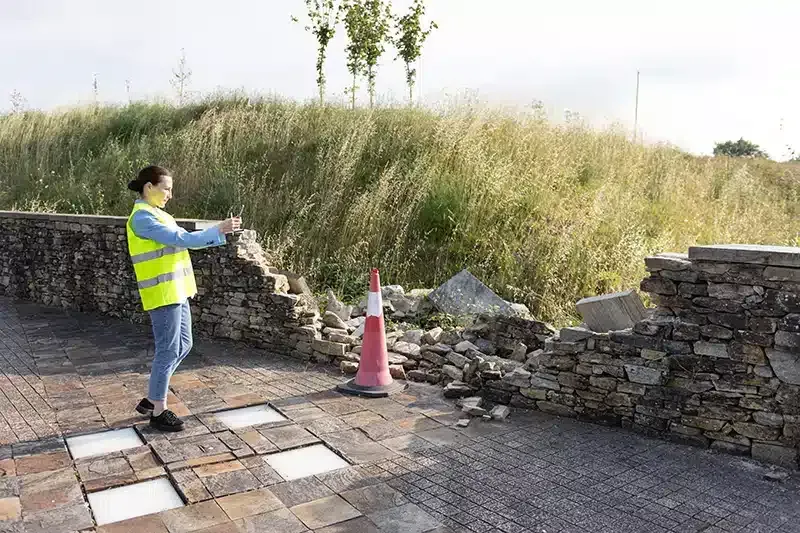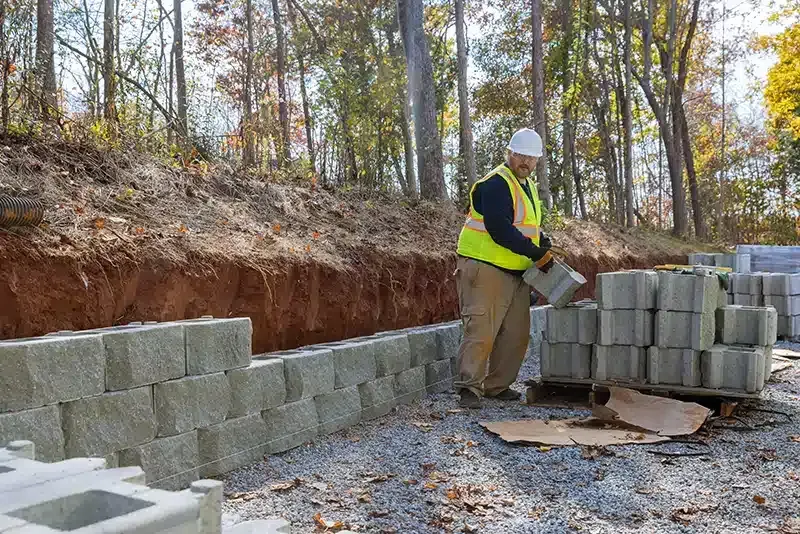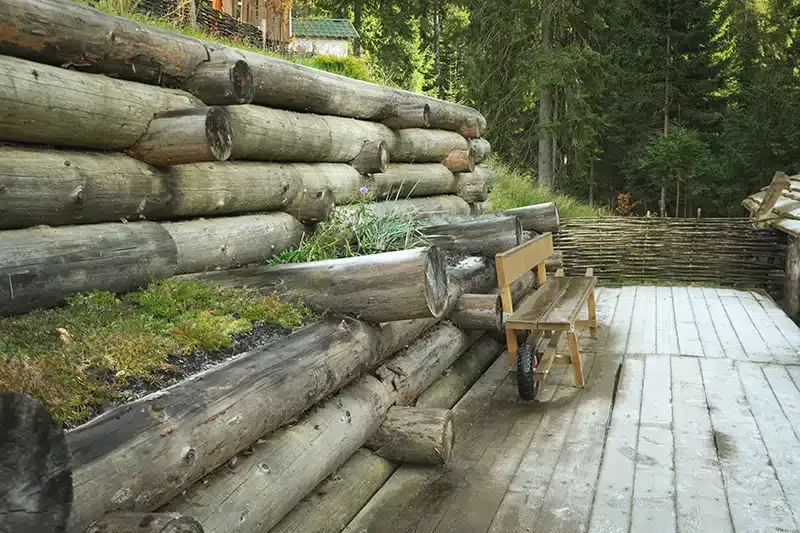How Stone Retaining Walls Can Increase Property Value
When considering ways to boost your property's value, stone retaining walls might not be the first thing that comes to mind.
However, their practical benefits and visual appeal can make a significant difference.
They help with erosion control and drainage, protecting your landscape and home.
But there's more to it. Let's explore how these features can transform your outdoor space and enhance your property's marketability.
The Functional Benefits of Stone Retaining Walls
Stone retaining walls
offer a multitude of functional benefits beyond just aesthetics.
Erosion Control:
- Soil Stabilization: Stone retaining walls provide excellent erosion control by stabilizing slopes and preventing soil from washing away due to rain, wind, or other natural forces.
- Protecting Property: They help protect your property from landslides, mudslides, and other forms of soil erosion that can damage structures and landscaping.
Improved Drainage:
- Directing Water Flow: Properly designed and installed stone retaining walls can effectively direct water flow away from the foundation of your home and other structures, preventing water damage and minimizing the risk of flooding.
- Reduced Erosion: By controlling water flow, stone retaining walls help to prevent soil erosion caused by water runoff.
Creating Usable Space:
- Leveling Slopes: Retaining walls can create level terraces, expanding usable space in your yard for gardens, patios, walkways, and other outdoor living areas.
- Supporting Structures: They can provide stable foundations for decks, patios, and other structures built on slopes.
Enhanced Property Value:
- Increased Curb Appeal: Stone retaining walls add a touch of natural beauty and elegance to any landscape, significantly enhancing curb appeal.
- Increased Property Value: A well-designed and constructed retaining wall can increase the overall value of your property.
Environmental Benefits:
- Reduced Runoff: By controlling water flow, stone retaining walls can help to minimize the impact of stormwater runoff on local waterways, reducing erosion and pollution.
Beyond their aesthetic appeal, stone retaining walls offer a range of valuable functional benefits, enhancing the safety, stability, and usability of your property while also contributing to environmental protection.
Aesthetic Enhancements and Curb Appeal
Stone retaining walls not only provide functional benefits but also significantly enhance the aesthetic appeal of your property.
1. Visual Interest and Focal Points:
- Textural Variations: The natural textures and colors of stone add visual interest and depth to your landscape.
- Creating Focal Points: Retaining walls can create striking visual focal points in your yard, drawing the eye and enhancing the overall design.
2. Defined Spaces and Enhanced Landscaping:
- Creating Defined Areas: Retaining walls can create defined spaces for gardens, patios, and other outdoor living areas.
- Improved Landscaping: They can help to frame and showcase your landscaping features, such as flower beds, shrubs, and trees.
3. Increased Curb Appeal:
- Enhanced Property Aesthetics: A well-designed and constructed stone retaining wall significantly enhances the overall curb appeal of your property.
- Attractive to Buyers: Enhanced curb appeal can increase the market value of your home and make it more attractive to potential buyers.
4. Versatility in Design:
- Style and Color Options: A wide variety of stone types, colors, and textures allows you to choose a style that complements your home's architecture and personal preferences.
- Customizable Designs: You can work with a landscape designer to create unique and customized wall designs that incorporate decorative elements such as integrated lighting or water features.
By carefully considering the aesthetic aspects of your retaining wall design, you can create a beautiful and functional addition to your property that enhances both its beauty and value.
Long-Term Value and Investment Potential
Investing in a well-designed and constructed stone retaining wall offers significant long-term value and investment potential.
Increased Property Value:
- Enhanced Curb Appeal: Stone retaining walls significantly enhance the aesthetic appeal of your property, making it more attractive to potential buyers.
- Improved Marketability: A well-maintained property with attractive landscaping, including a beautifully constructed retaining wall, is generally more marketable and can command a higher sale price.
Reduced Maintenance Costs:
- Long-Term Durability: High-quality stone retaining walls are built to last, requiring minimal maintenance over time.
- Reduced Repair Costs: By preventing soil erosion and stabilizing slopes, retaining walls can help to reduce the risk of costly property damage and repairs.
Increased Property Functionality:
- Expanded Usable Space: Retaining walls create usable outdoor living spaces, such as terraces and patios, increasing the overall functionality and enjoyment of your property.
- Improved Drainage: By effectively managing water runoff, retaining walls can help to prevent water damage to your property, further reducing long-term maintenance costs.
Environmental Benefits:
- Reduced Soil Erosion: By preventing soil erosion, retaining walls protect your property from damage and contribute to a healthier environment.
- Improved Water Quality: By minimizing soil erosion and runoff, retaining walls help to protect local waterways from sedimentation and pollution.
By investing in a well-designed and constructed stone retaining wall, you not only enhance the beauty and functionality of your property but also make a wise investment that will pay dividends for years to come.
Investing in a stone retaining wall offers a multifaceted return on investment. Beyond their practical benefits in erosion control and drainage, these walls significantly enhance the aesthetic appeal of your property.
By creating defined spaces, adding visual interest, and improving curb appeal, stone retaining walls increase the overall value and marketability of your home.
This investment not only enhances your enjoyment of your outdoor living spaces but also provides long-term benefits, protecting your property from damage and contributing to a more sustainable and environmentally conscious landscape.


